RUBENS L. 1753
Synonyms :
Crassula rubens (L.) L. (1759) / Aithales rubens (L.) Webb & Berthelot (1840)
Sedum boissierianum Haussknecht in sched.(s.a.)
Sedum pallens Haworth (1821)
Sedum rubens DC (1828)
Sedum matrense Kitaibel (1863) / Sedum hispanicum fa matrense (Kitaibel) Jávorka (1924)
Procrassula mediterranea Jordan & Fourreau (1866) / Sedum rubens var. mediterraneum (Jordan & Fourreau) Rouy & Camus (1901)
Procrassula pallidiflora Jordan & Fourreau (1866) / Sedum rubens var. pallidiflorum (Jordan & Fourreau) Rouy & Camus (1901)
Sedum simplex Steudel ex Boissier (1872)
Sedum steudelii Boissier (1872)
Sedum ibicense Pau (1900)
Sedum rubens var. praegeri Fröderström (1932)
Sedum rubens var. haouzense Andréanszky (1938)
Distribution : Near East, southern, central and western Europe, Northern Africa, Canary Islands (probably introduced).
Description (according to 't Hart & Bleij in IHSP 2003) :
Erect annual herbs, 2 - 15 cm, glandular-pubescent especially in the upper parts, usually glaucous, reddish.
Leaves 10 - 20 mm, in whorls of 4, alternate in the upper parts, linear to elliptic, semiterete.
Inflorescences pubescent bracteate cymes with 2 - 3 or more cincinniform branches.
Flower 5-merous, sessile, with 5 stamens (rarely 5 - 10), sepals broadly sessile, basally connate, ± 1 mm, triangular, petals ± 5 mm, usually keeled and sharply acuminate, white, rarely pinkish, usually erect during anthesis, filaments as long as the carpels, anthers small, globose, red or yellowish.
Cytology : 2n = 40, 40, 40 - 42, 60, 76, 80, 94, 100, ± 110
Ray Stephenson writes (Sedum, Cultivated Stonecrops, 1994, p. 112) : "Sedum rubens, which is closely related to S. hispanicum, is strictly 5-partite ...[and] is always annual."
See also : Sedum eriocarpum, S. hispanicum, S. pallidum, S. pentapetalum
Plantes en culture - collectage : Eric Barbier, Bassurels (Lozère - France) alt. 700 m
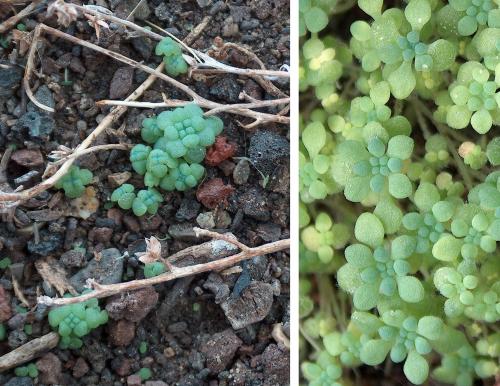
Young seedlings (leaves in whorls of 4).
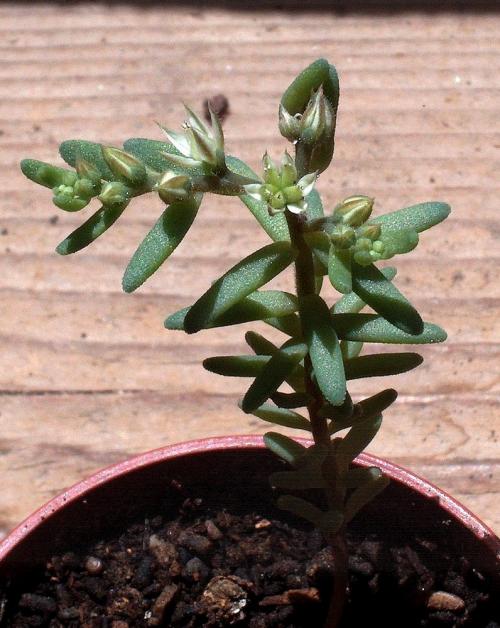
Plante en fleur (feuilles du bas verticillées, en haut alternes, fleurs pentamères).
Flowering plant ( leaves below in rows of 4, above alternate, flowers 5-merous).
Photos Eric Barbier
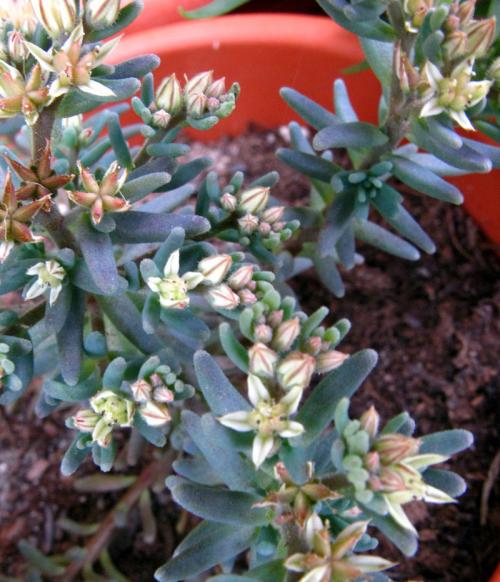
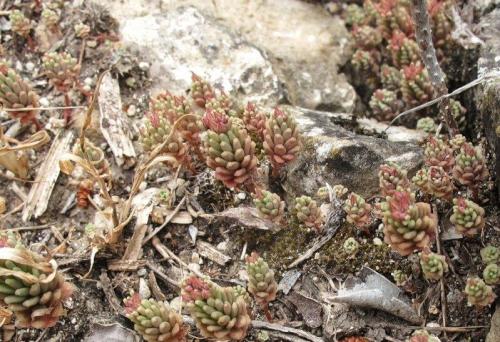
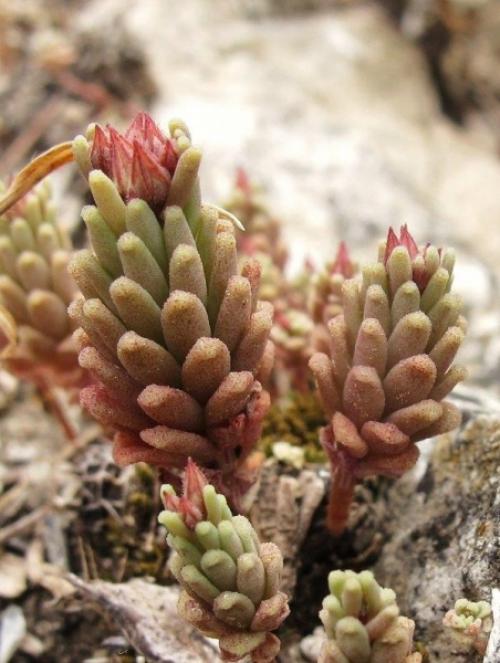
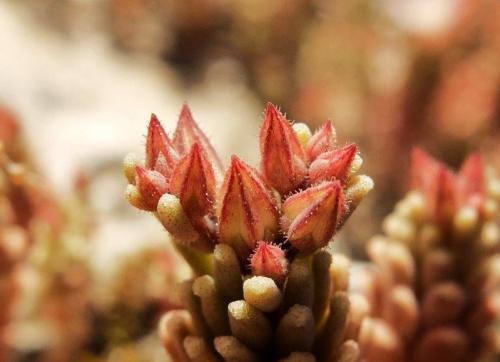
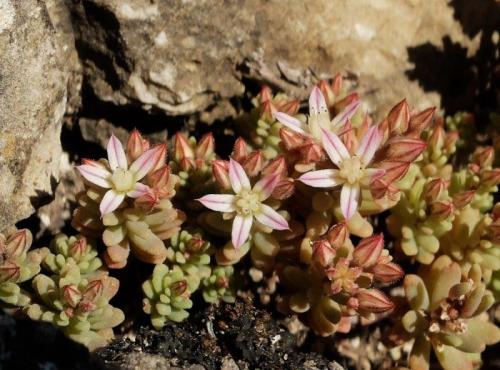
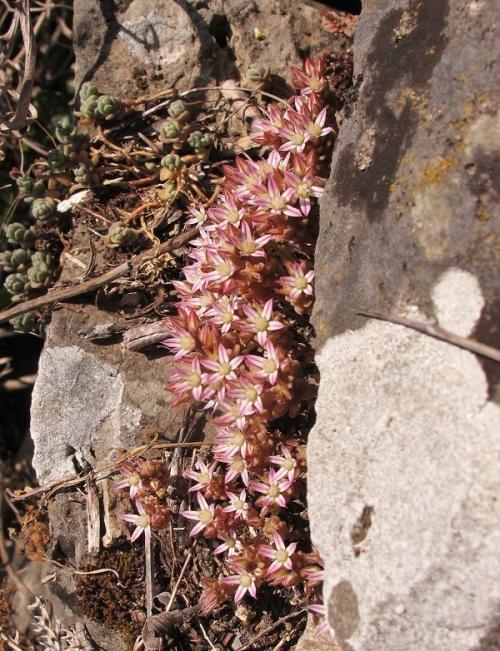
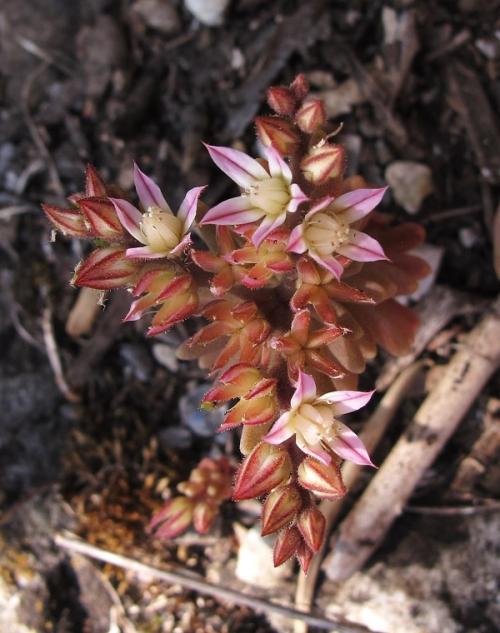
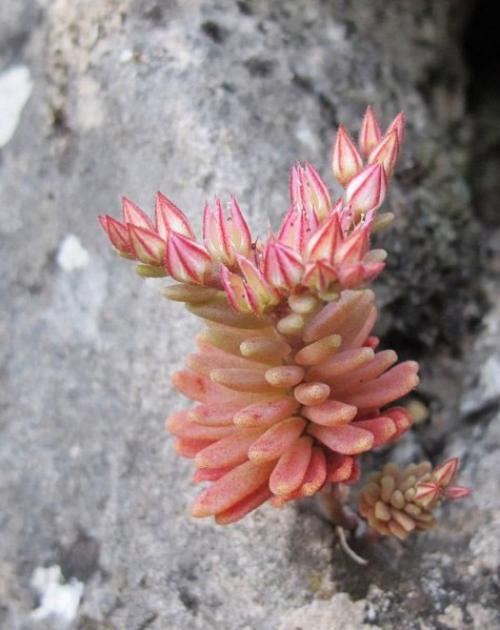
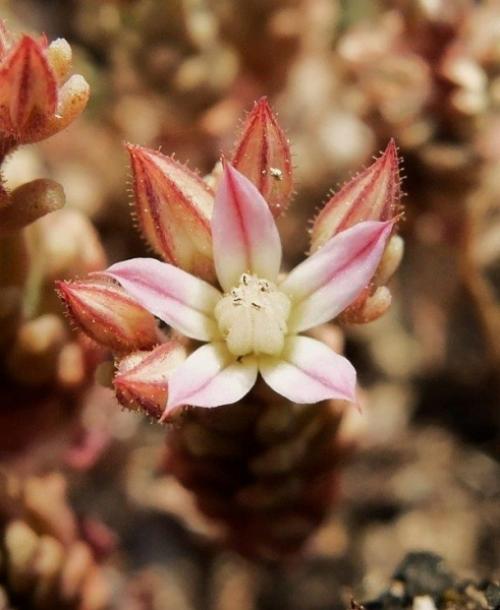
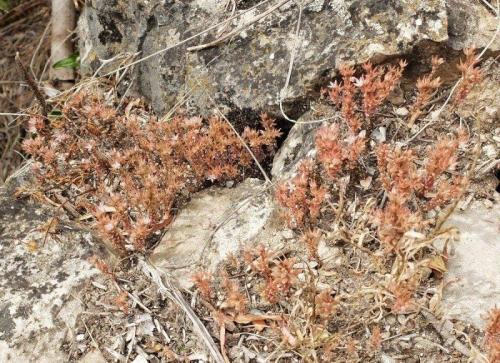
Photos à Saint-Jean-Cap-Ferrat. La plante pousse dans un sol calcaire situé à 110 m d'altitude.
In a shady spot :
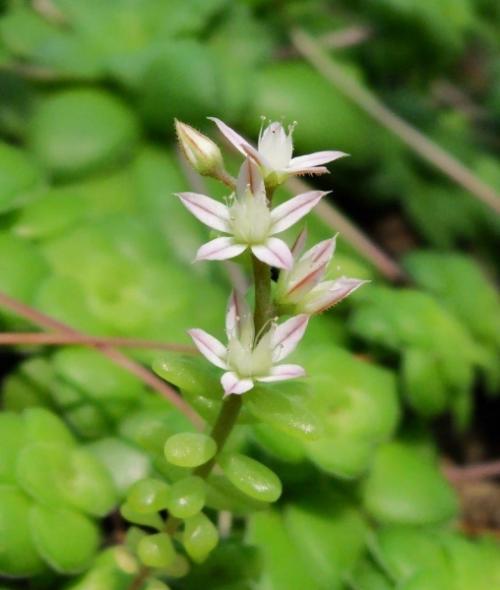
Photos Thomas Delange
La Gomera :
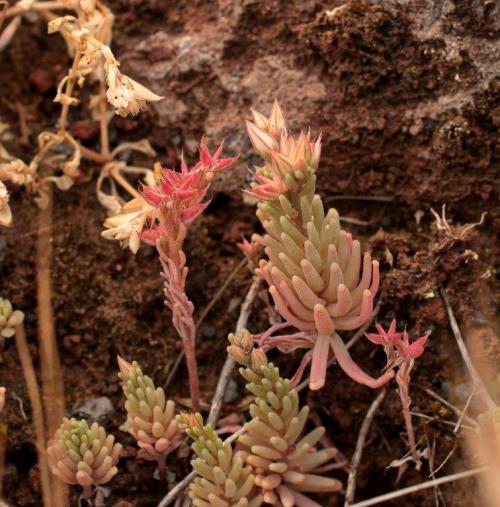
Photo Stefan Neuwirth
Sedum steudelii, now synonymous with S. rubens :
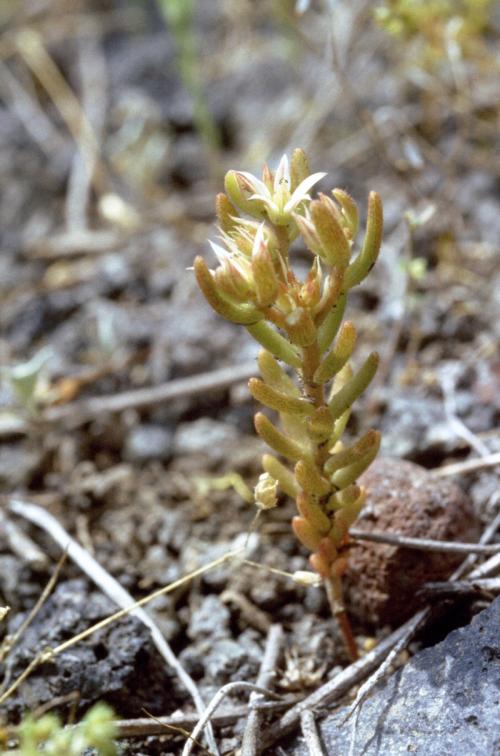
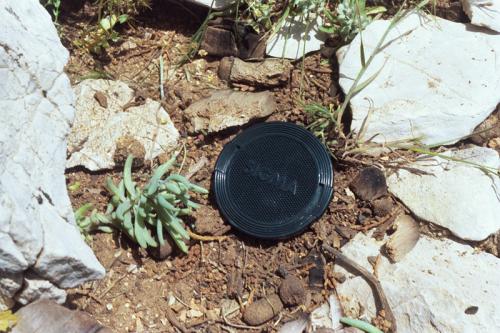
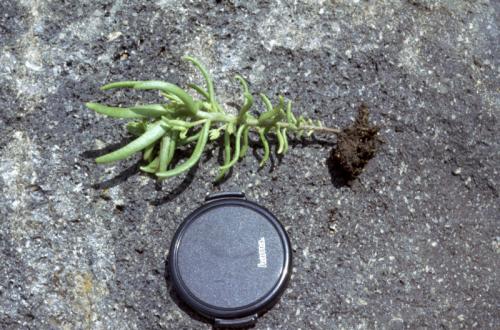
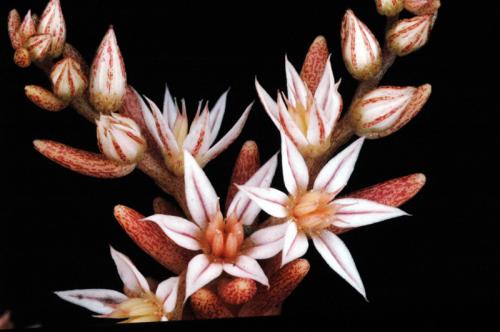
When I realised that in Crassulaceae Eggli et al., this species had been submersed into S. rubens, I was more than a little surprised. Plants tend to be huge by comparison and simple. I have found the two species growing within 30km of each other and had no difficulty separating them.
60mm lens cap. Photographs taken at foot of Mt Ararat c3500m, N facing.
S. rubens, Lake Ichkeul, Tunisia :
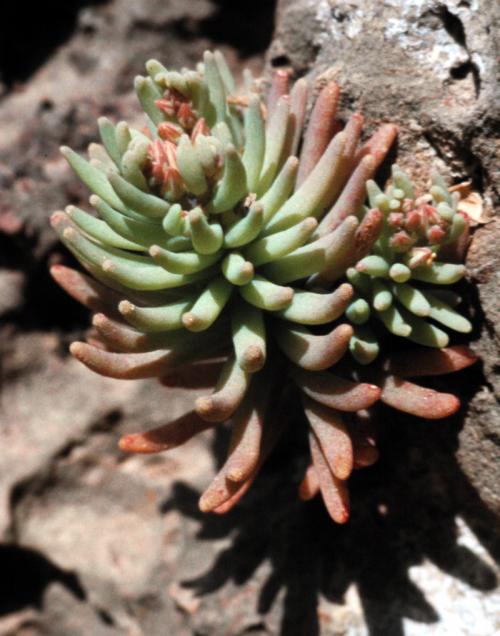
Ray Stephenson
To see more photos : Crassulaceae in the Cévennes mountains
by Eric Barbier
Sedum poussant en carrière d'ardoise de Trélazé, Anjou, France / Sedum in the schist quarry at Trélazé, Anjou, France by David Sorin
Plant in cultivation :
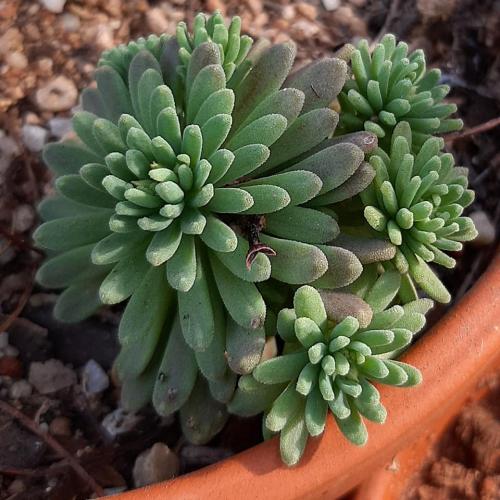
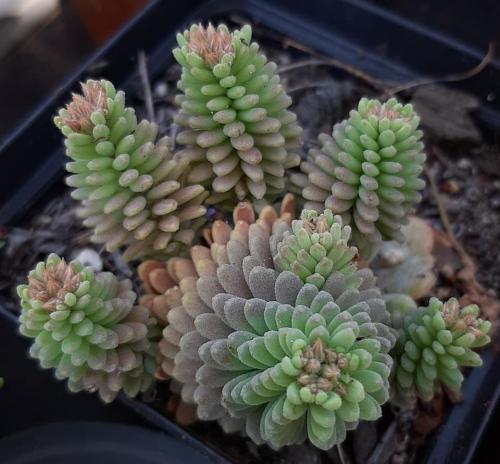
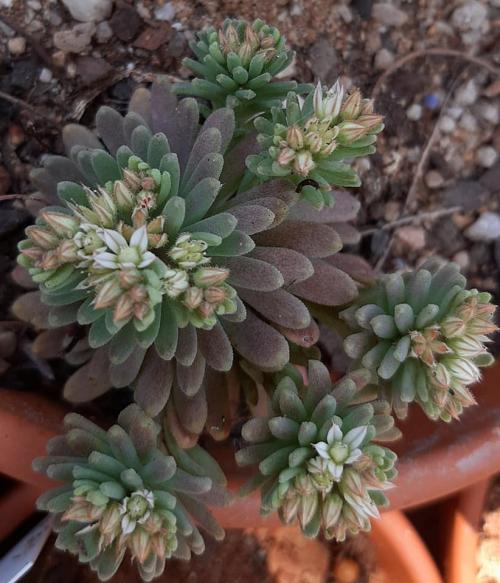
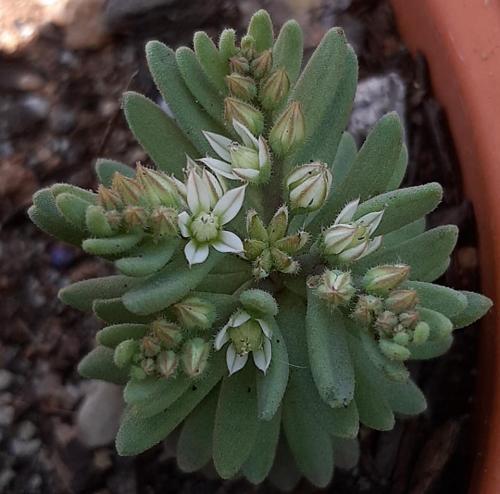
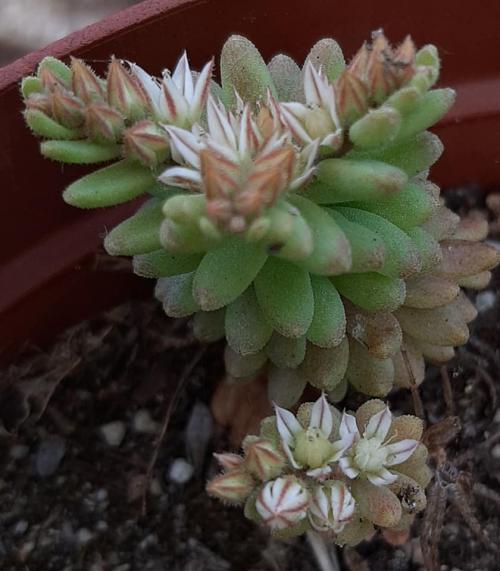
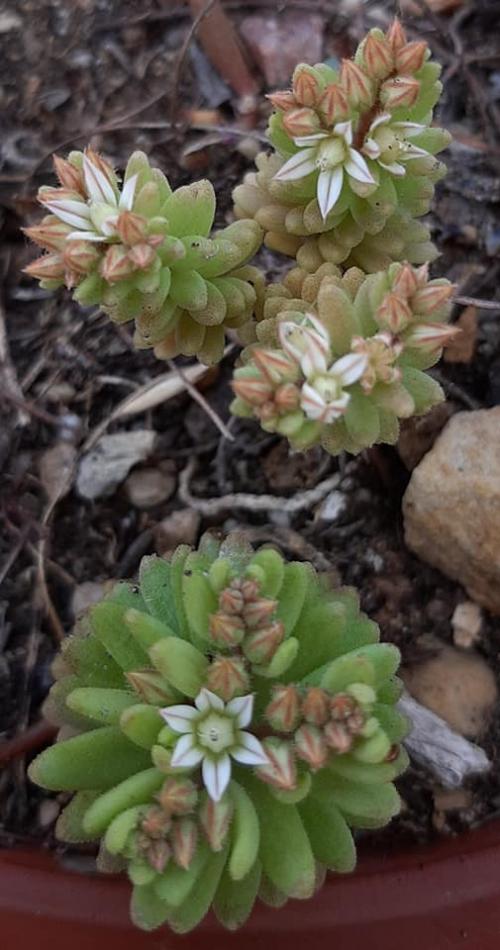
Photos Jacquie Koutsoudis